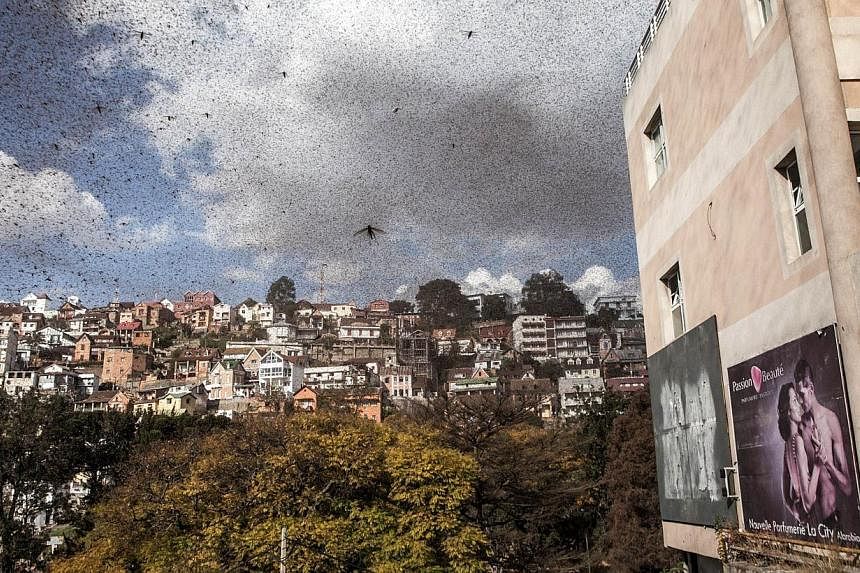ANTANANARIVO (AFP) - A thick grey swarm of locusts engulfed Madagascar's capital on Thursday, sending children scuttling and causing florists to burn tyres in panic.
A bank of ravenous insects clouded the sky over Antananarivo, with countless thousands raining down dead on to the streets.
"We are going to give them to the chickens to eat, if the chickens don't die, we'll eat them," said 13-year-old Anthoni Razafimahatratra, enthusiastically scooping handfuls of insects into a plastic bag.
Locust swarms are common on this Indian Ocean island, with the hot and humid climate serving as an ideal breeding ground.
This most recent outbreak has affected an area the size of Japan and devastated rice and maize fields.
The swarms have multiplied uncontrollably in recent years, because of government inaction following a coup.
Teams from the UN and Madagascar's anti-locust agency have tried for several months to contain the swarms by spraying insecticide by airplanes and helicopters.
Experts said a recent heat wave allowed the locusts to leave their natural rural environment and head for the city.
"I am very surprised at the number of these crickets which invade the city. The state is not in control of the situation," said Jean Ramananarivo, a resident in the capital.

